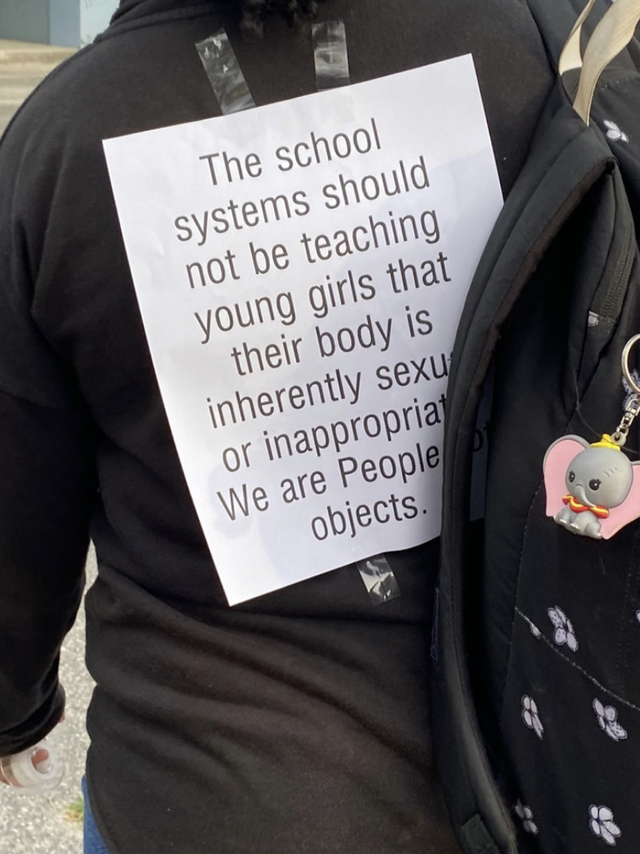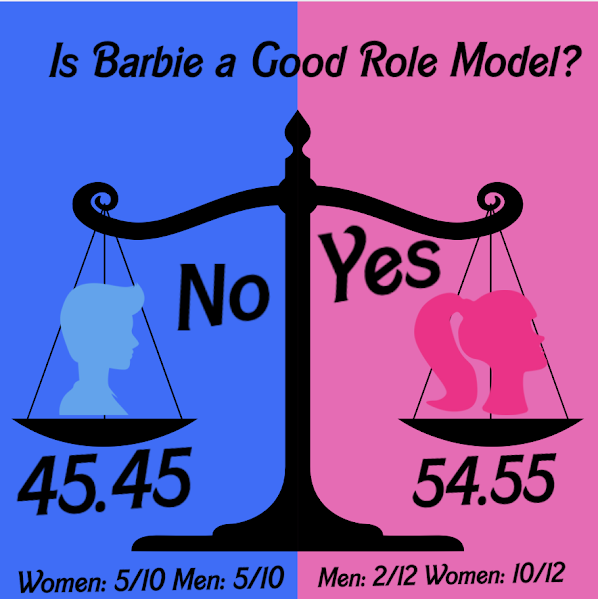Dress Code Still Needs Revision
In August of 2021, students in Duval County Public Schools Florida organized dress code protests.
School dress code controversies have been trending recently, concerning the rules pertaining to gender neutrality and Warren Hills is no exception. While the district has made some appropriate revisions to its dress code policy to reflect 2021 gender-neutral standards, there remains a section, (ironically, section F) that is biased against females. Students across the country have even tested their own dress code regulations, and have proved this theory to be true.
Growing up with a construct of what one can or cannot wear as a student can shape impressionable minds in the wrong ways. Constantly being reminded you cannot show certain parts of your body can make people feel self-conscious. Young girls in particular may feel less confident in the future growing up not being able to dress their body how they like.
Non-binary students may feel overpowered by hyper-feminine and hyper-masculine rules not pertaining to them. Cisgender males may look at the rules as being okay for them and develop a mindset that they are held to a different standard than other students. In reality, students should all feel comfortable, important, secure, and equal when trying to abide by the dress code.
While there have been noticeable improvements to the language of the dress code in the 2021-2022 Warren Hills Regional High School Parent/Student Handbook, it remains biased against students with female anatomy. For example, in Section F, the inappropriate clothing description encompasses: “Scanty clothing that includes, but is not limited to… tops which may expose cleavage and tops which expose bra straps.” Because males don’t have cleavage or wear bras, this rule could only be broken by a female.
Another example of bias against females in Section F includes: “open backs; single strap tops; tank tops that are considered underwear; halter tops {and} tube tops.” In fact, rules mentioning cleavage, shoulders, midriff, open backs and exposed bra straps target the female students more than the males.
Section B, however, states everything that needs to be said in a gender-neutral manner; therefore Section F could be eliminated entirely. “Garments or revealing, see-through clothing that excessively exposes anatomy” steers clear of sexist terminology compared to the implied expressions towards women stated in Section F.
Alternatively, the problem could be solved with a more specific change in wording, like “shirts must be cut no longer than three inches below the collarbones,” or whatever the administration decides is appropriate, but until then, Section F is obviously only applicable to those who are female.
All together, an established set of rules that must be followed by all genders, should pertain to all genders. Gender neutral dress codes must become more popular among schools for students to feel accepted and understood. Warren Hills is a great example of being the change.






